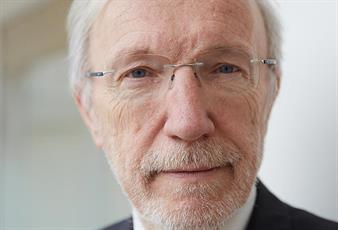David Blecken 20 Feb 2020 // 1:04AM GMT

As fear and uncertainty around the global spread of the coronavirus (COVID-19) continue, efforts to communicate the facts are in competition with unhelpful political posturing and deliberate efforts to mislead.
Part Two: Corporates Focus On Internal Comms As Coronavirus Fears Grow
While some governments have been praised for their response to the crisis, others have been seen failing to present the full picture or at worst, misrepresenting the situation.
In a crisis such as this one, people look for three things from the authorities, says Rachel Catanach, senior partner and Greater China president at Fleishman Hillard: reassurance that the government is doing everything it can to contain the virus; timely information as to its status and actions people can take; and the promise of equal access to preventive measures and healthcare in a fair and timely way.
Singapore has widely been singled out as exemplary. There, prime minister Lee Hsien Loong set the tone early on with a video designed to dispel panic, offer practical precautions, and reassure from an infrastructural perspective. The message made the rounds on social media before misinformation had a chance to take hold. Critically, it marked only the start of an ongoing effort to communicate with the public as the situation develops.
“Action has been quick, transparent and robust, for the most part leaving citizens with trust that their safety is in good hands, more so than we’re seeing in some countries facing an equal or higher threat,” observes Rikki Jones, Asia-Pacific managing director of GCI Health.
The effectiveness of government communications around a crisis such as this depends on more than the response itself. “Singaporeans typically have a high level of trust in their government, a situation that isn’t universal across this region, and that backdrop is immensely helpful at this time,” Jones adds.
Showing “empathy for the situation while exerting the necessary controls” is a “fine balancing act” that such a level of trust has enabled in Singapore, Catanach agrees. “In other economies, the erosion of trust means there is more suspicion around government intentions and the veracity of message, leading many people to seek alternative information sources.”
That has been evident in Hong Kong, where the virus interrupted protests fuelled by deep discontent over chief executive Carrie Lam’s leadership style and vision for the city’s future. Demonstrations returned at the weekend, with protesters railing against plans to form coronavirus centres in selected buildings.
Where Singapore’s Lee was able tackle problems such as hoarding, panic-buying in Hong Kong has led to a shortage of household essentials such as toilet roll—and an armed robbery to seize what remains. While the government insists that the coronavirus has not affected supplies, supermarkets have not been able to restock fast enough to keep up with demand.
The example raises the question as to just how much governments have learned since SARS (Severe Acute Respiratory Syndrome), which hit in 2003. Observers’ opinions are mixed. Tim Goddard, president of Global Health PR in the US, takes a dim view of how China as a whole has handled the crisis from a communications standpoint.
“As we reflect on the key lessons learned from SARS, the quick communication of a newly identified virus, especially one originating from a live animal market, would seemingly be the top priority,” he says. “Unfortunately, that did not happen with COVID-19. It’s been well documented that the Chinese government tried to hide knowledge of the virus, notably censoring Dr Li Wenliang when he tried to alert colleagues to the unknown, SARS-like virus. The government then lagged in its communication about human-to-human transmission, opening up the possibility for many more people to unknowingly become infected.”
He notes that the lack of transparency is a repeat of that during SARS and “has led to a general distrust of information coming out of China about the prevalence, severity and risk of transmission of COVID-19”.
Goddard adds that while other countries do appear to have learned from SARS, issuing regular public statements and publishing real-time maps chronicling the number of diagnoses and deaths, “communications about the implications of closed borders and mandatory quarantines has been handled much more poorly”. Those on lockdown in Wuhan and on the Diamond Princess cruise liner in Japan (which began disembarkation on 19 February) appear to have suffered in the dark, while in the US there also seems to be a lack of communication to those who have been repatriated but remain quarantined.
Still, Jones thinks the experience of SARS does mean most countries are at least somewhat better prepared to deal with an emerging outbreak.
“Lessons are definitely being applied, but a number of them could have been implemented faster and with more weight behind them,” Jones says, adding that “strong international cooperation will be required to ensure the lessons of COVID-19 are learned more tangibly than those of SARS”.
That spirit of cooperation currently seems to be lacking. Catanach compares fighting the virus to fighting a war, where “the first casualty is often the truth”. As in war situations, “communication between governments is often politically coloured along opposing lines,” she says. In this instance, “governments in the West were quick to blame China for being too slow and covering up the harsh realities of the situation”.
In another example, Russian state media appears to have encouraged the spread of conspiracy theories that position the virus as an American biological weapon. In another still, US Senator Tom Cotton has propagated a fringe theory (debunked by experts) that the virus originated in a Chinese research laboratory.
Social media has of course amplified conspiracy theories and general misinformation to a level far beyond that seen during SARS, with the World Health Organization (WHO) branding the phenomenon an “infodemic”. Goddard says this has had a “tremendous impact”, from inciting racism to panic buying of products like surgical masks even in the US, despite health authorities’ advice to the contrary. In Australia, a fake media release warned people to stay away from suburbs in Brisbane with large Chinese populations.
Efforts to combat the problem range from Singapore’s implementation of the Protection from Online Falsehoods and Manipulation Act (POFMA) to the collaboration of Facebook, Google and Amazon with the WHO to root out misleading information. Facebook remains primarily dependent on its fact-check partners to catch fake news, but has also introduced new measures such as a pop-up linking to reputable information when a user searches for information on the coronavirus.
Catanach calls the coming together of the WHO and big tech “a good first step”, but no one can claim to be on top of the matter. “Unfortunately it’s now a catch-up game to dispel the myths that were able to gain traction but the damage done can be somewhat diminished with the right continued efforts from governments and platforms,” says Jones.
To improve course from a communications perspective at this stage, she says governments must focus on getting ahead of misinformation and “leading the conversation with facts and genuine assurances that they’re doing everything possible to keep people safe and healthy”.
More context would also help, Goddard suggests, especially in the mainstream media. He notes that the regular flu has already hospitalised 180,000 Americans and caused 10,000 deaths this season. He says most “are far more worried about the new coronavirus, which has received exponentially more media attention. With proper context about the extent of risk Americans face at the current moment in time, fears would subside significantly”.
Alarmist tones, including the inaccurate use of the word ‘pandemic’, “can stoke fears in parts of the world where the risk is very remote”, he says. Ultimately, to prevent the situation worsening beyond the effects of the disease itself, anyone in a position of authority has a responsibility to communicate with transparency, accuracy and context.
“The best possible outcome now would be this emergency inspiring a better long-term sustainable model for the tackling of irresponsible [health-related] content,” Jones says.
Part Two: Corporates Focus On Internal Comms As Coronavirus Fears Grow


































.jpg)

















